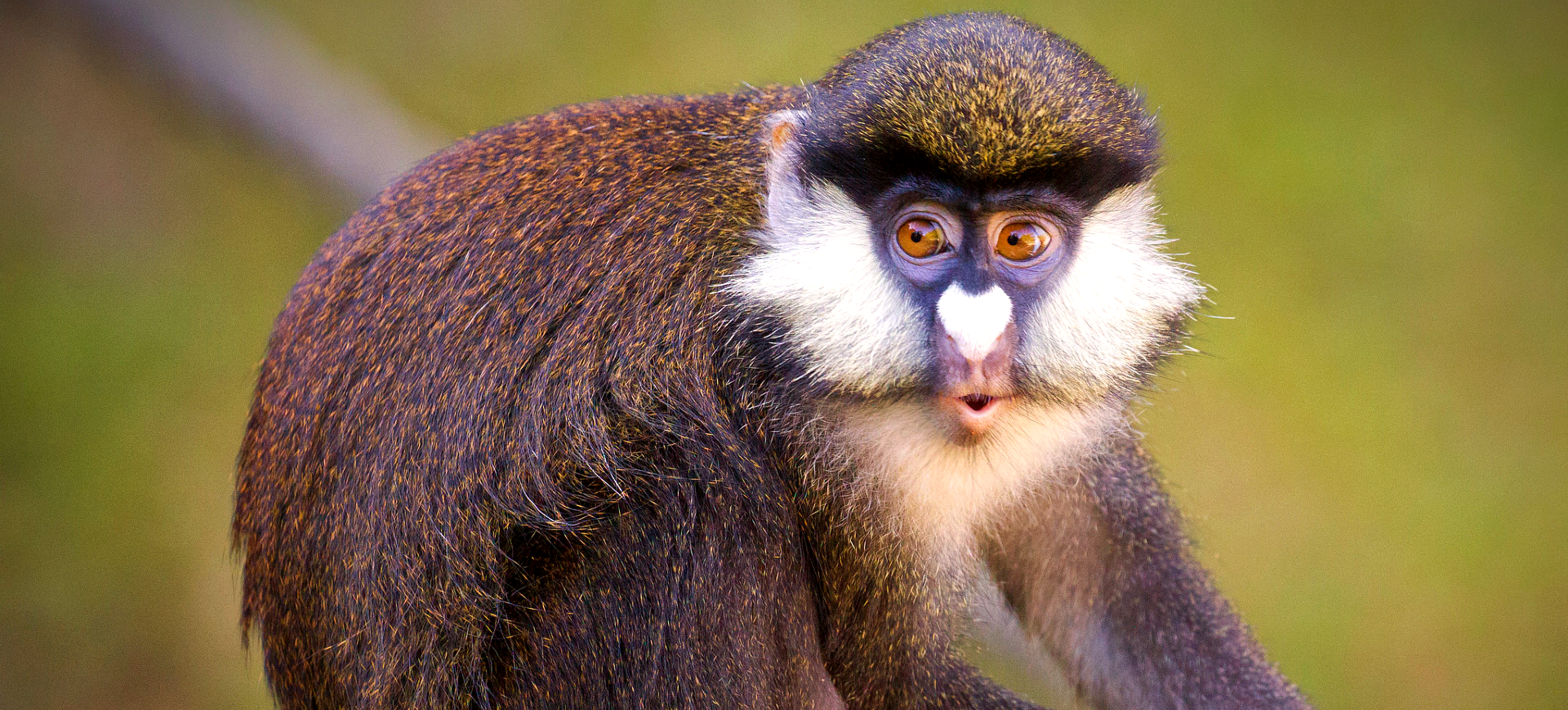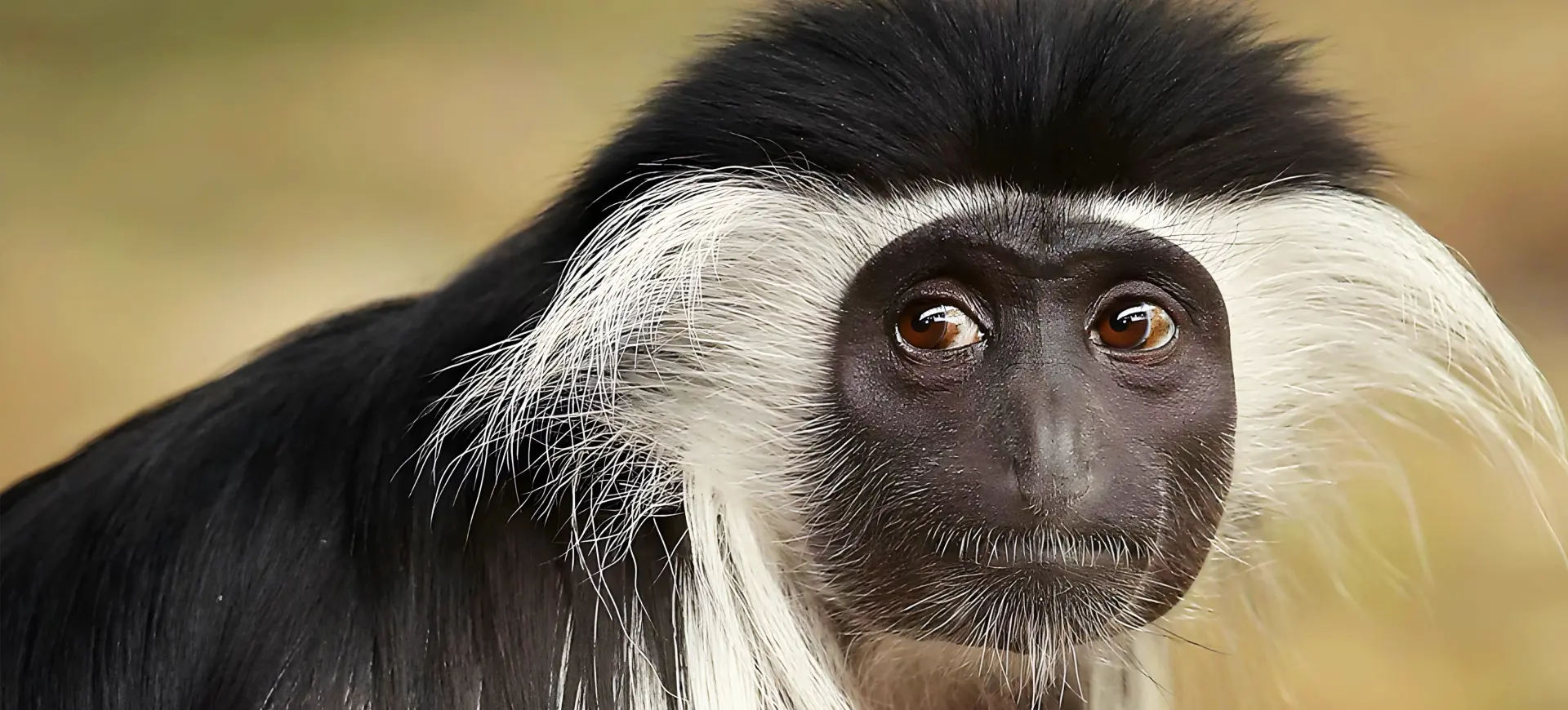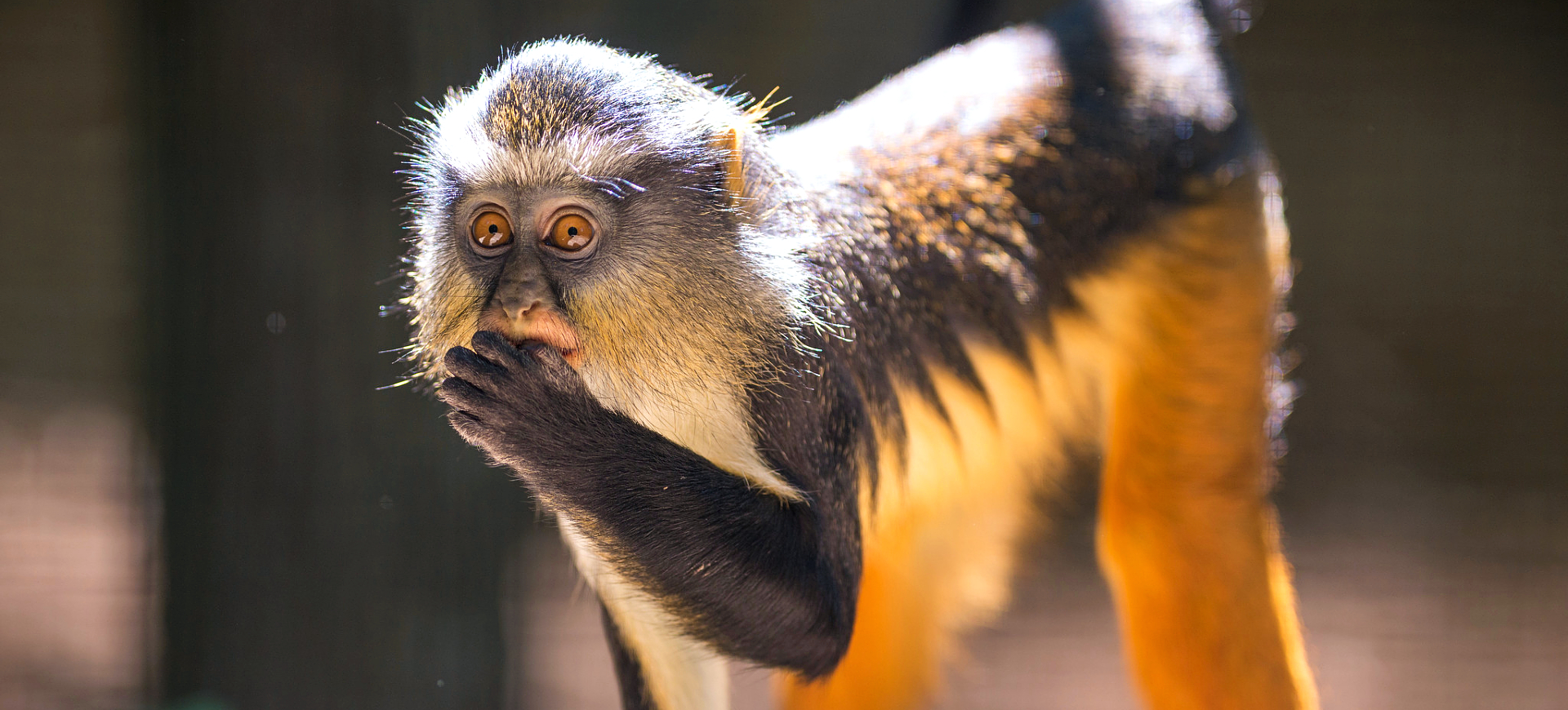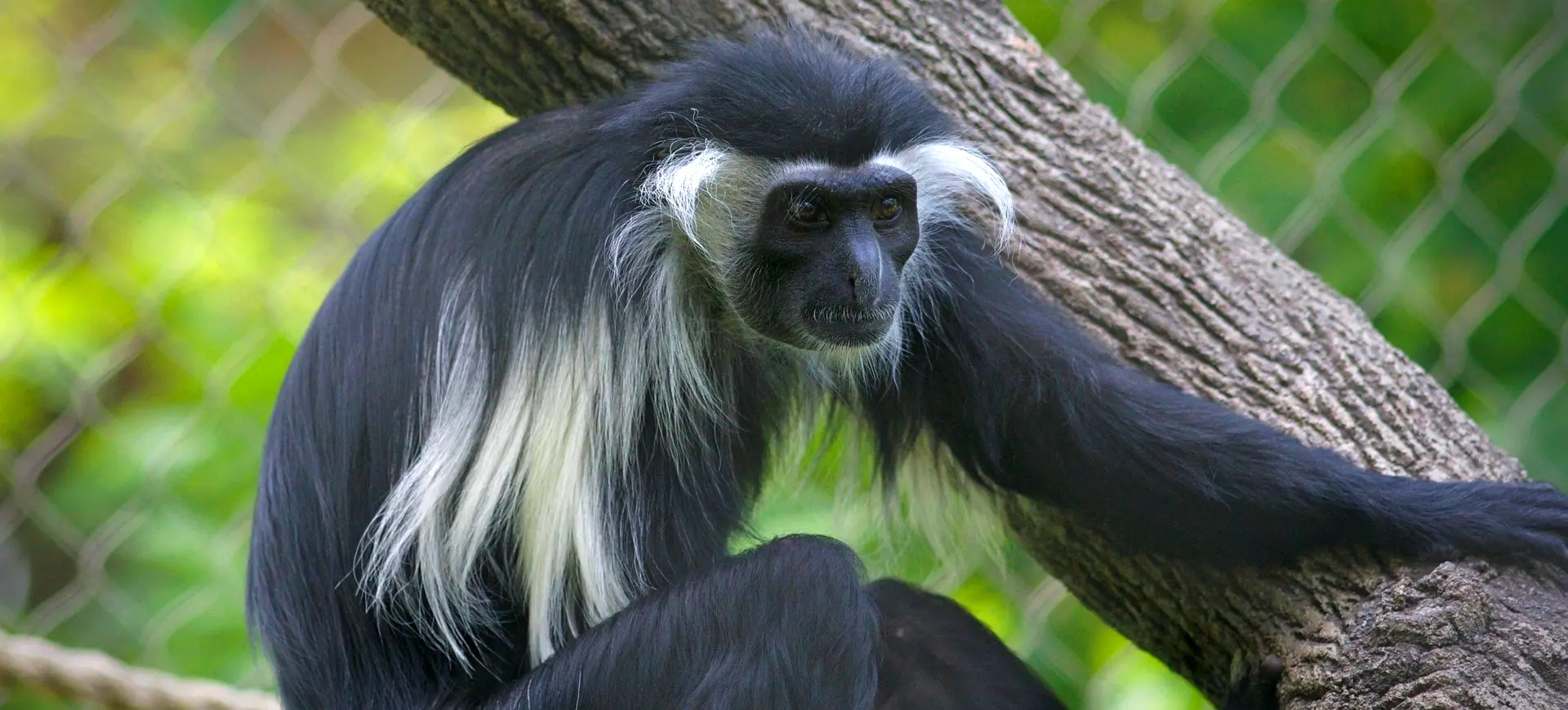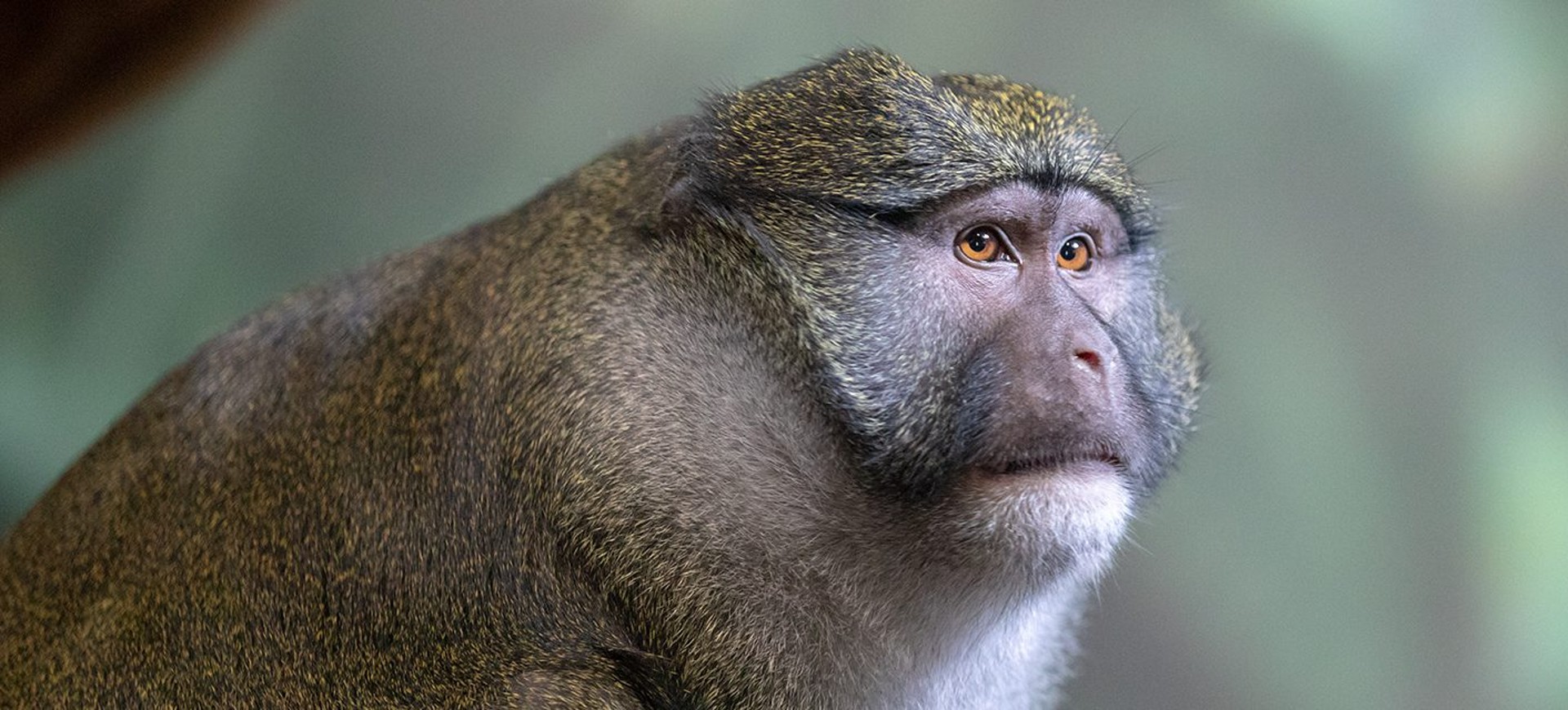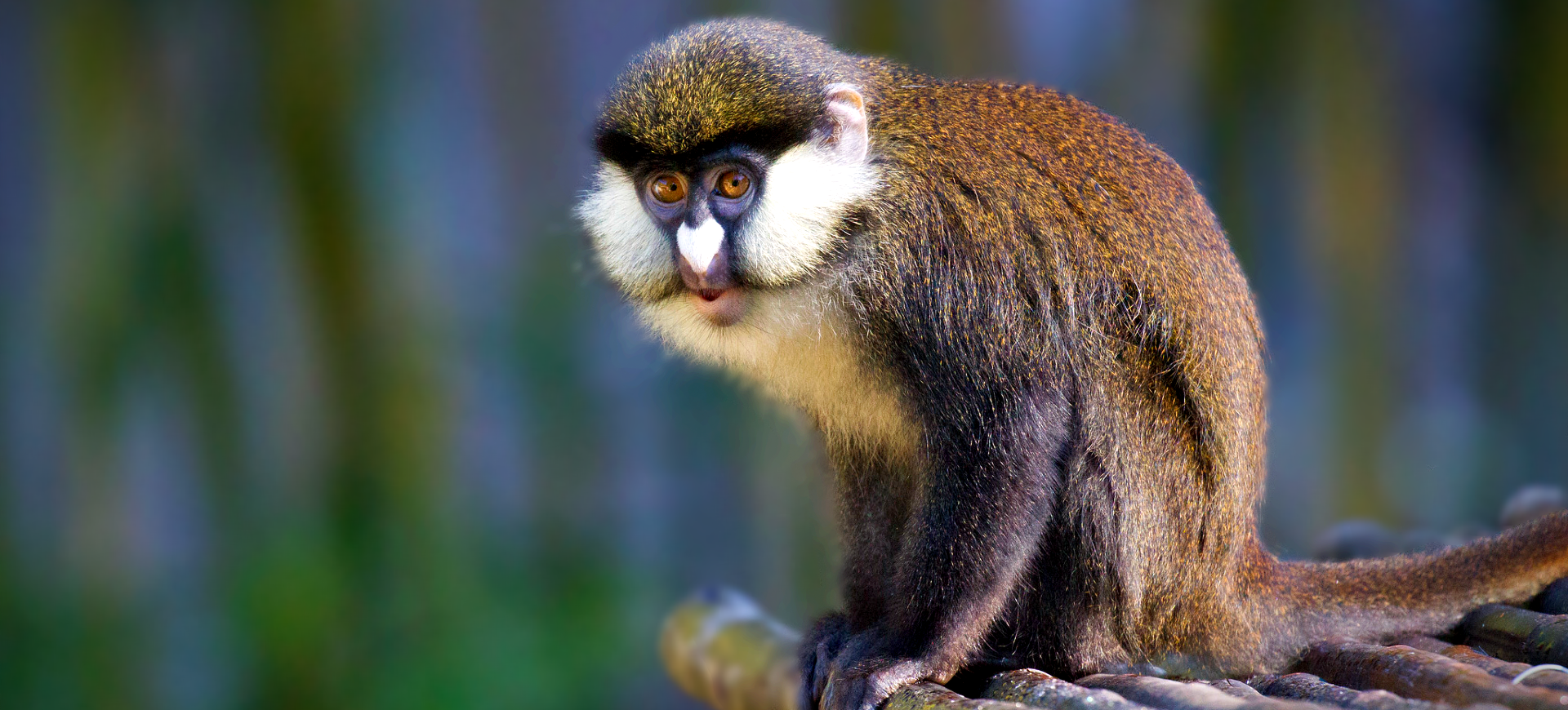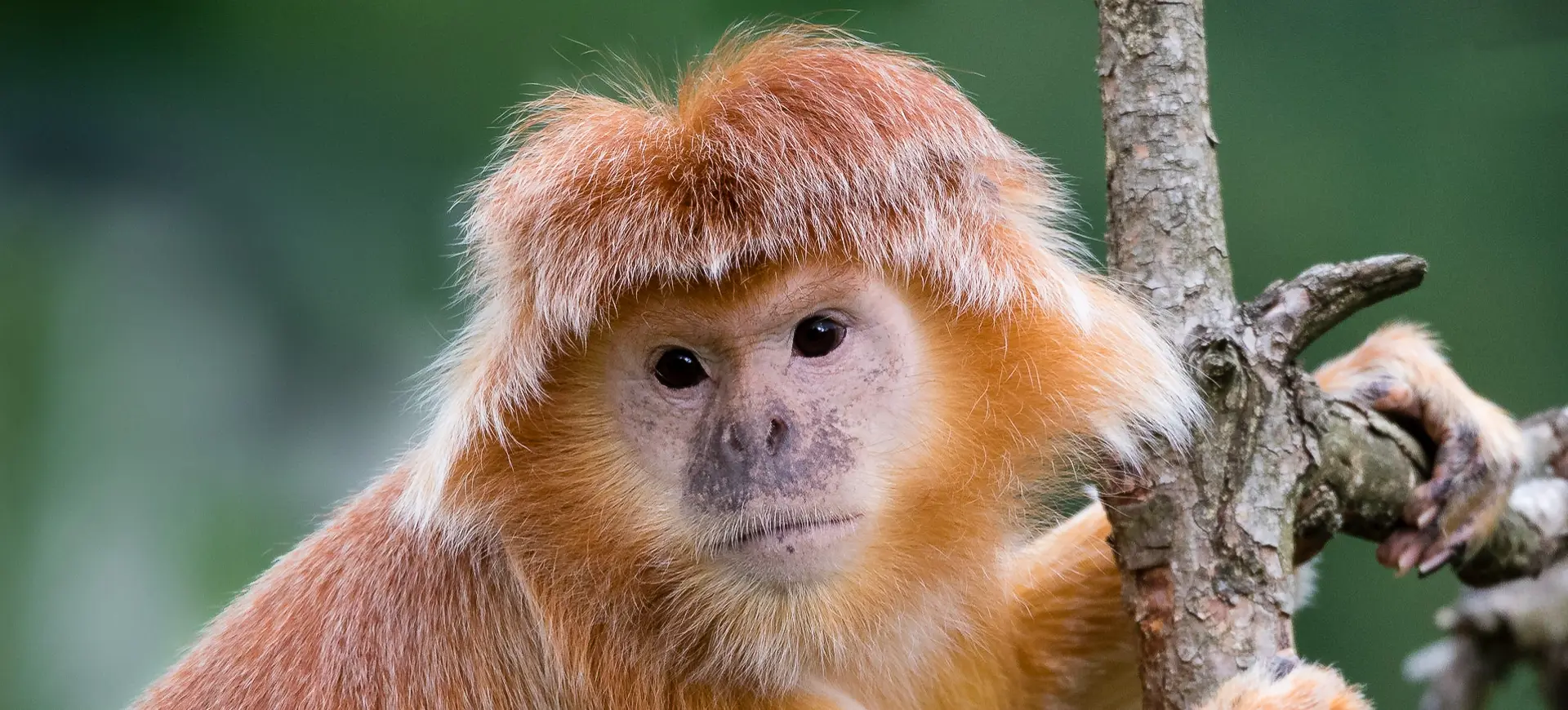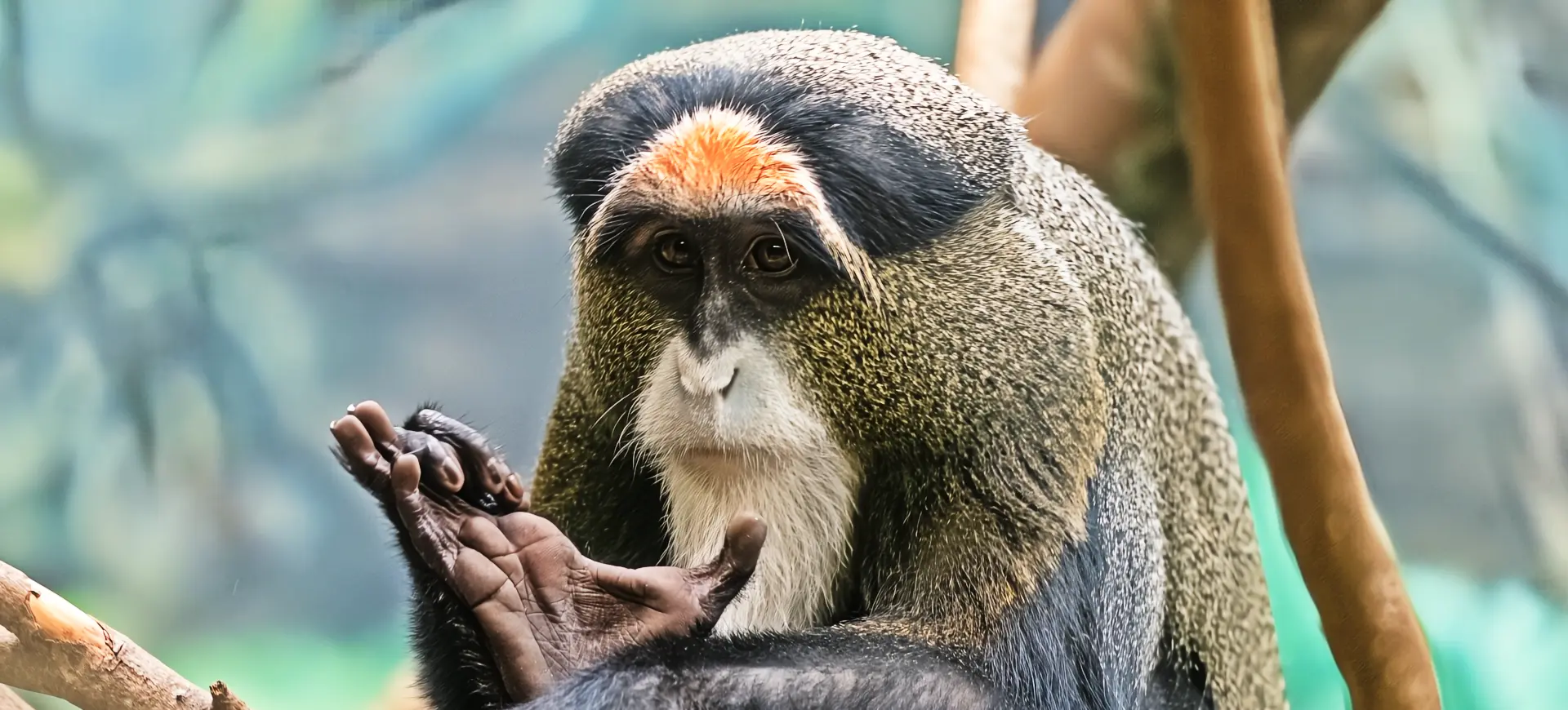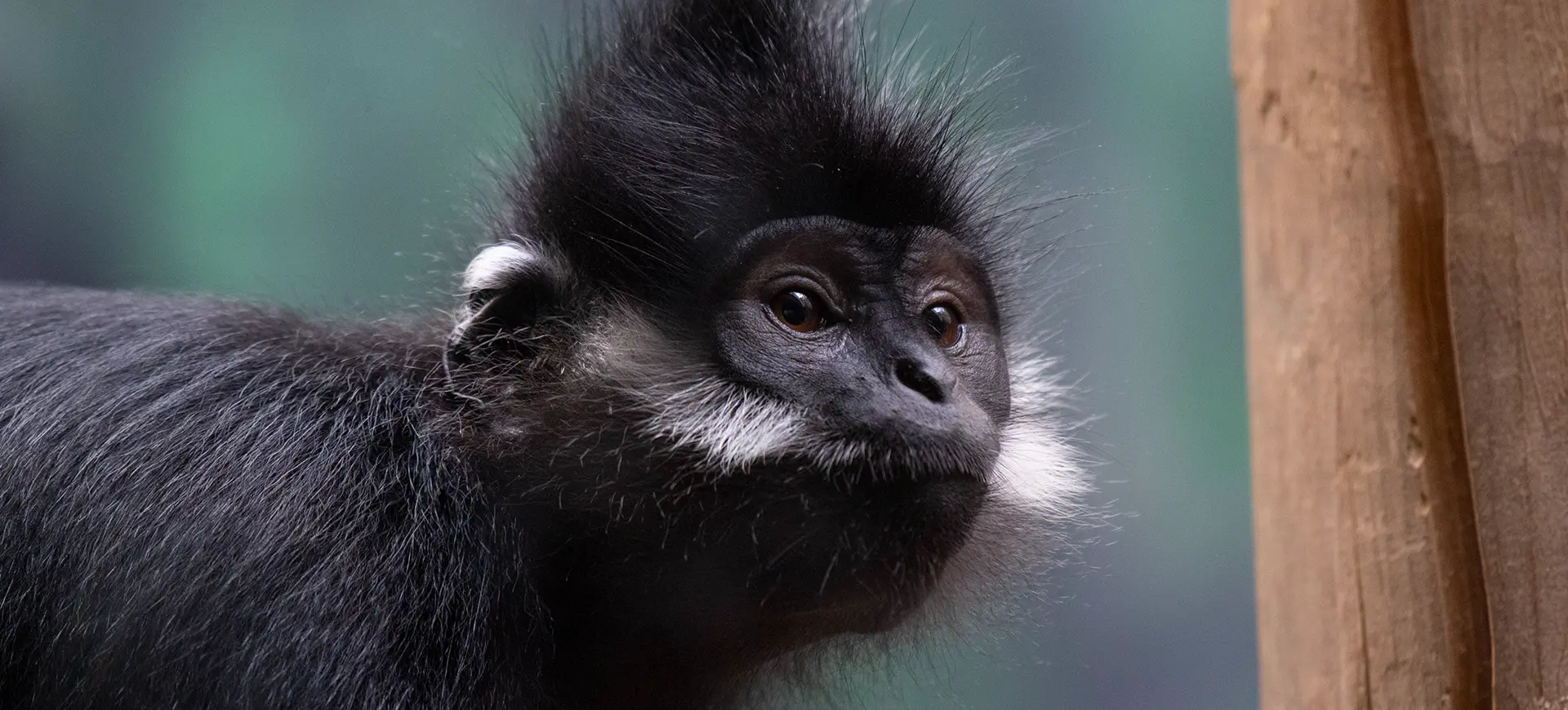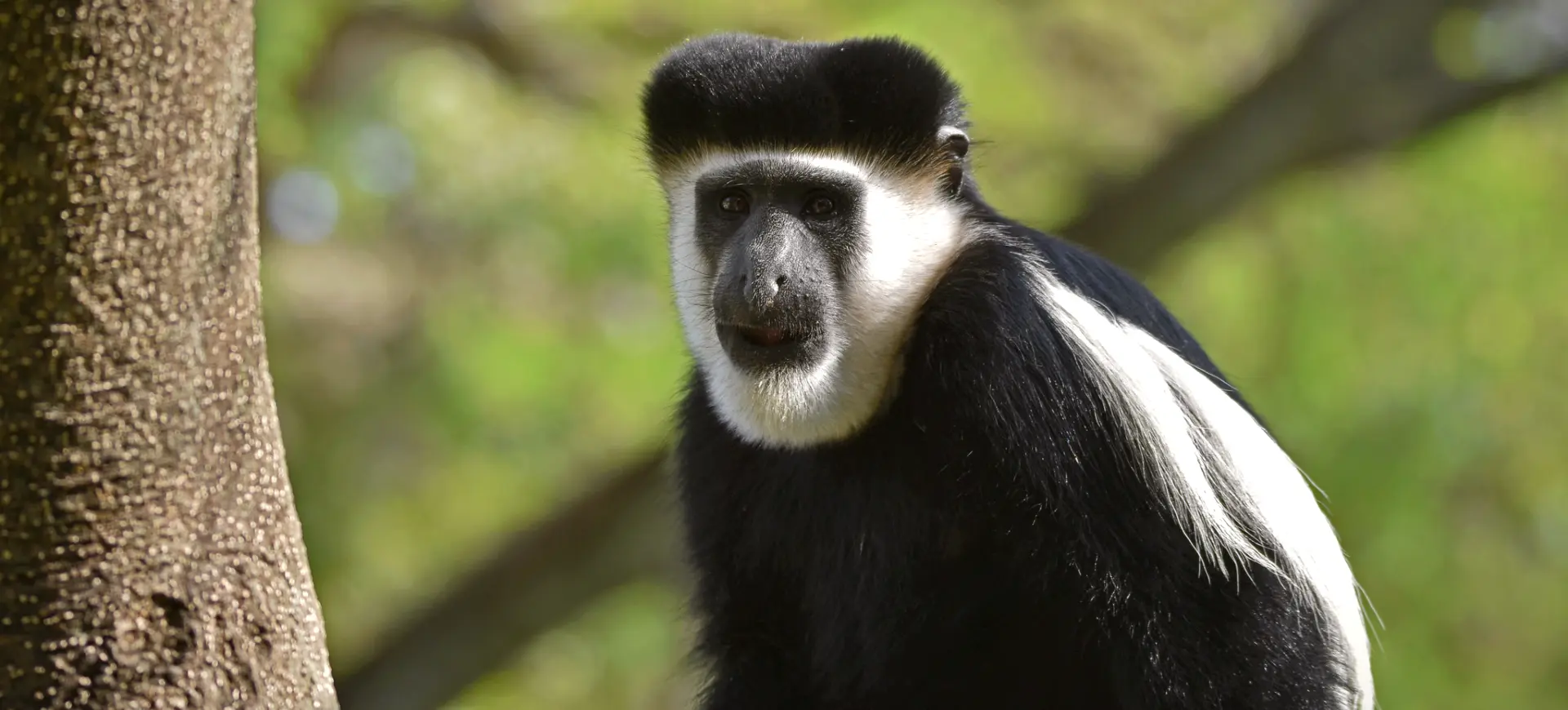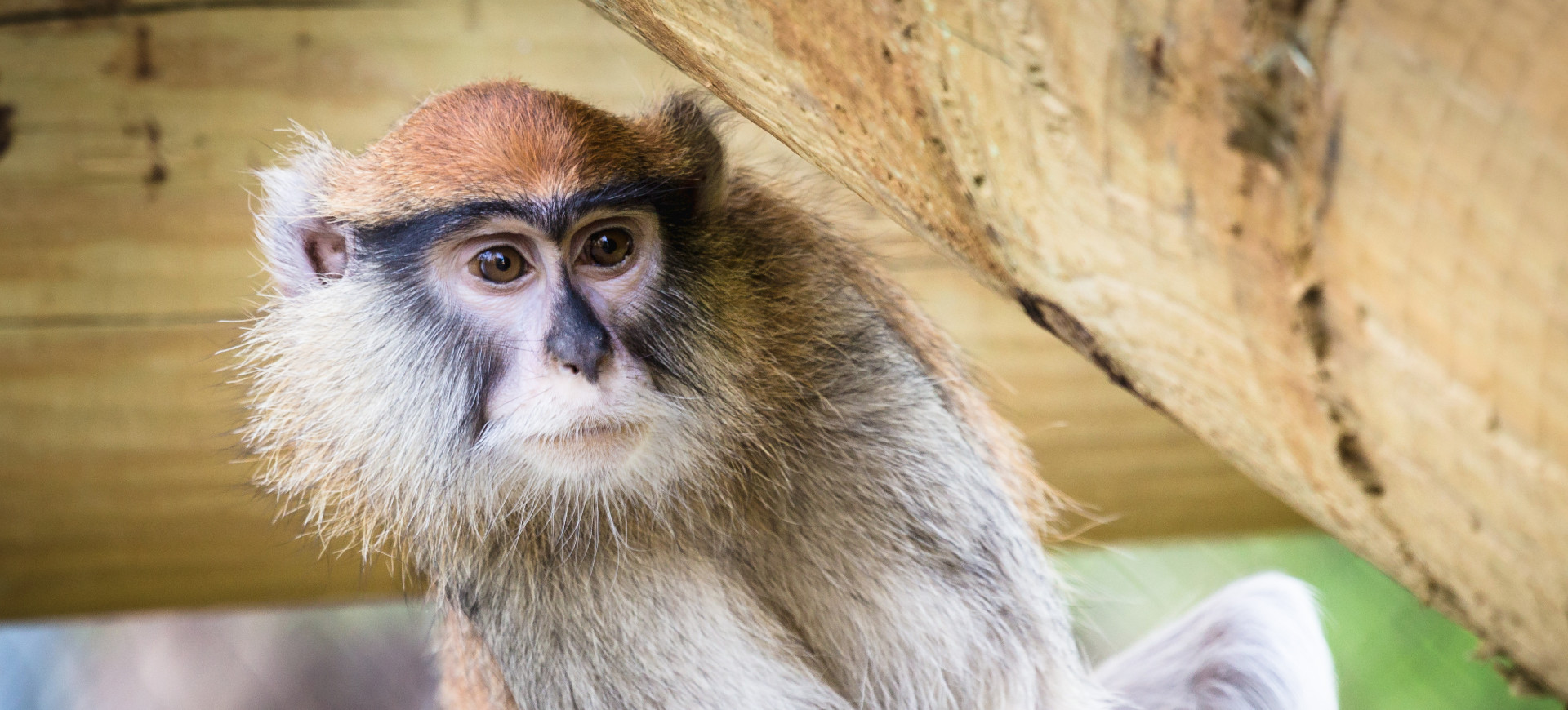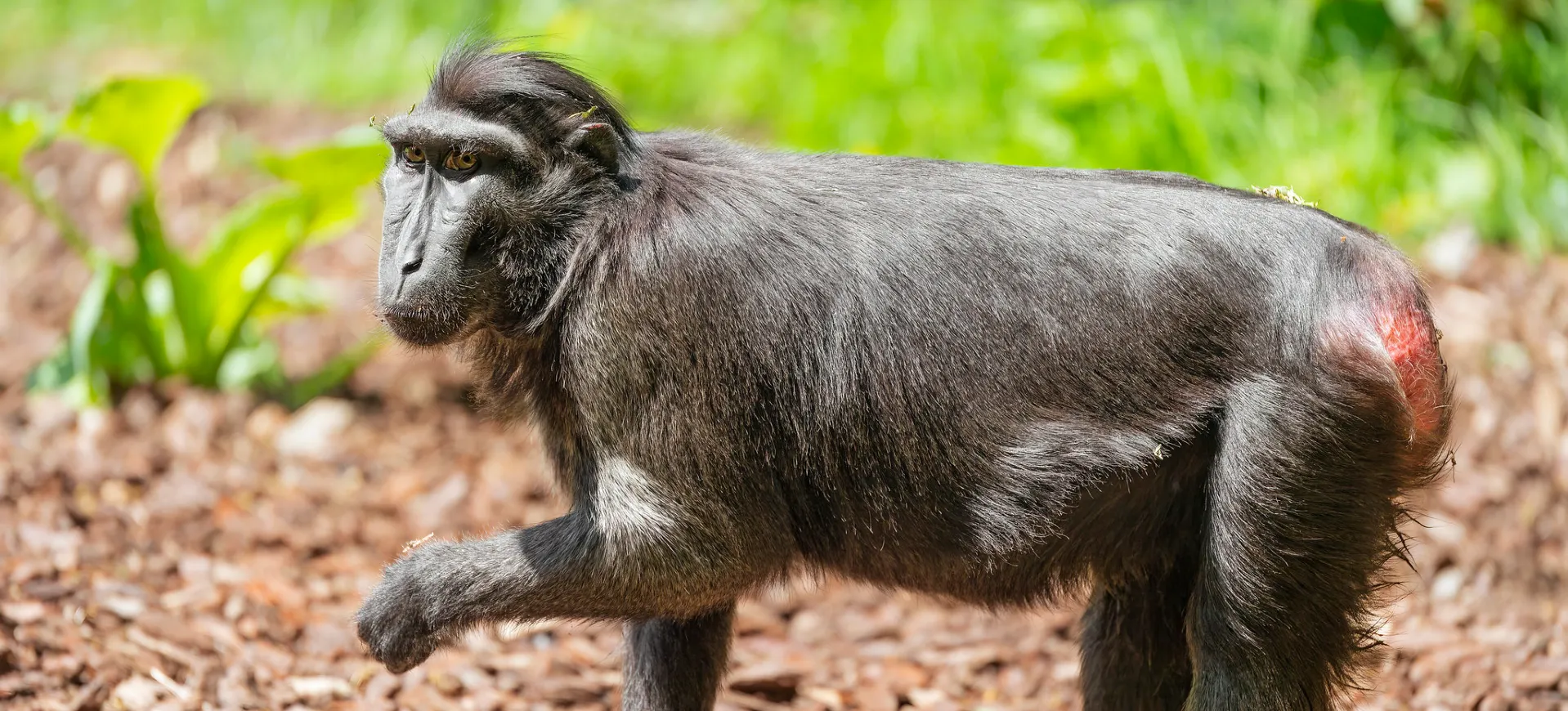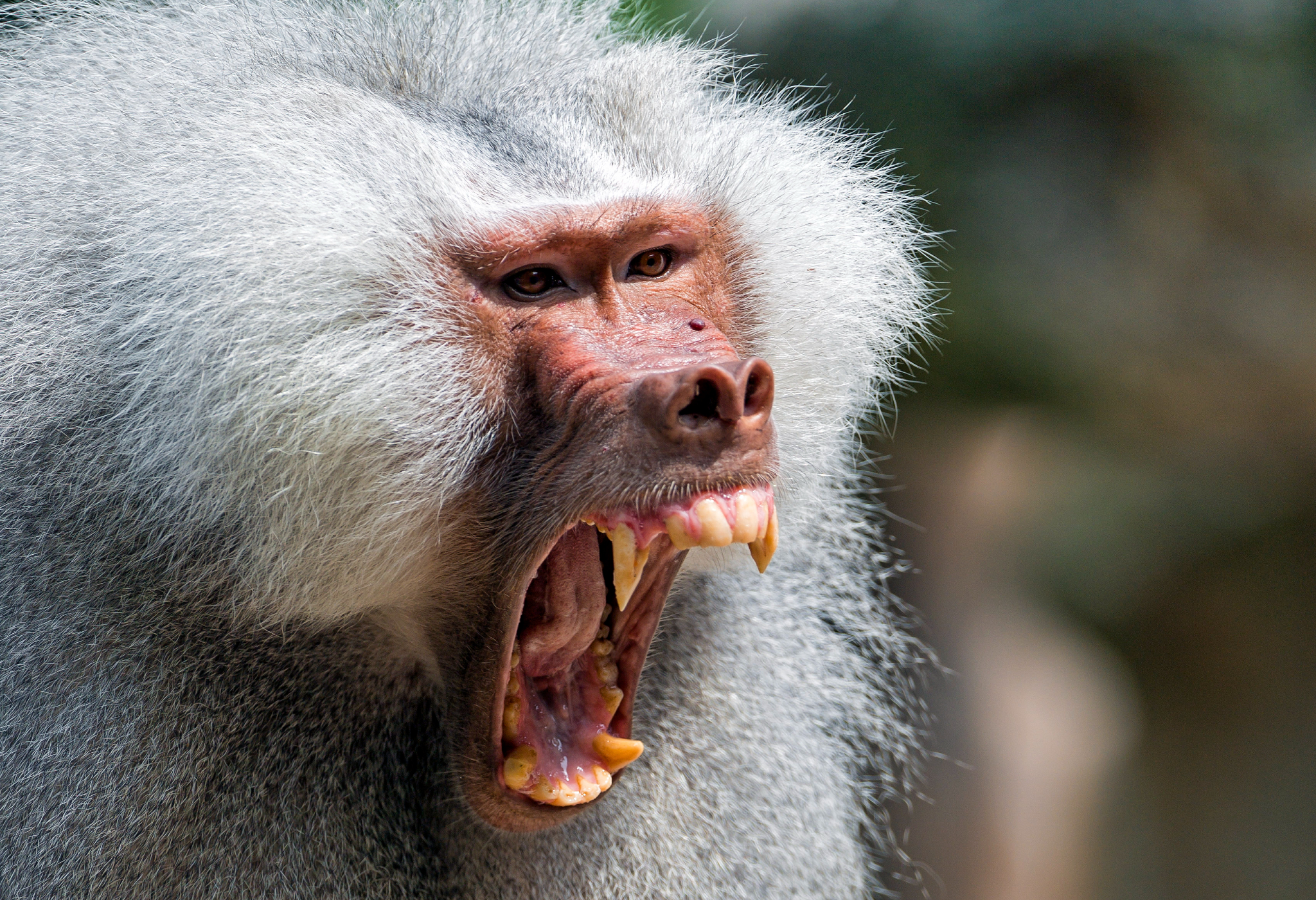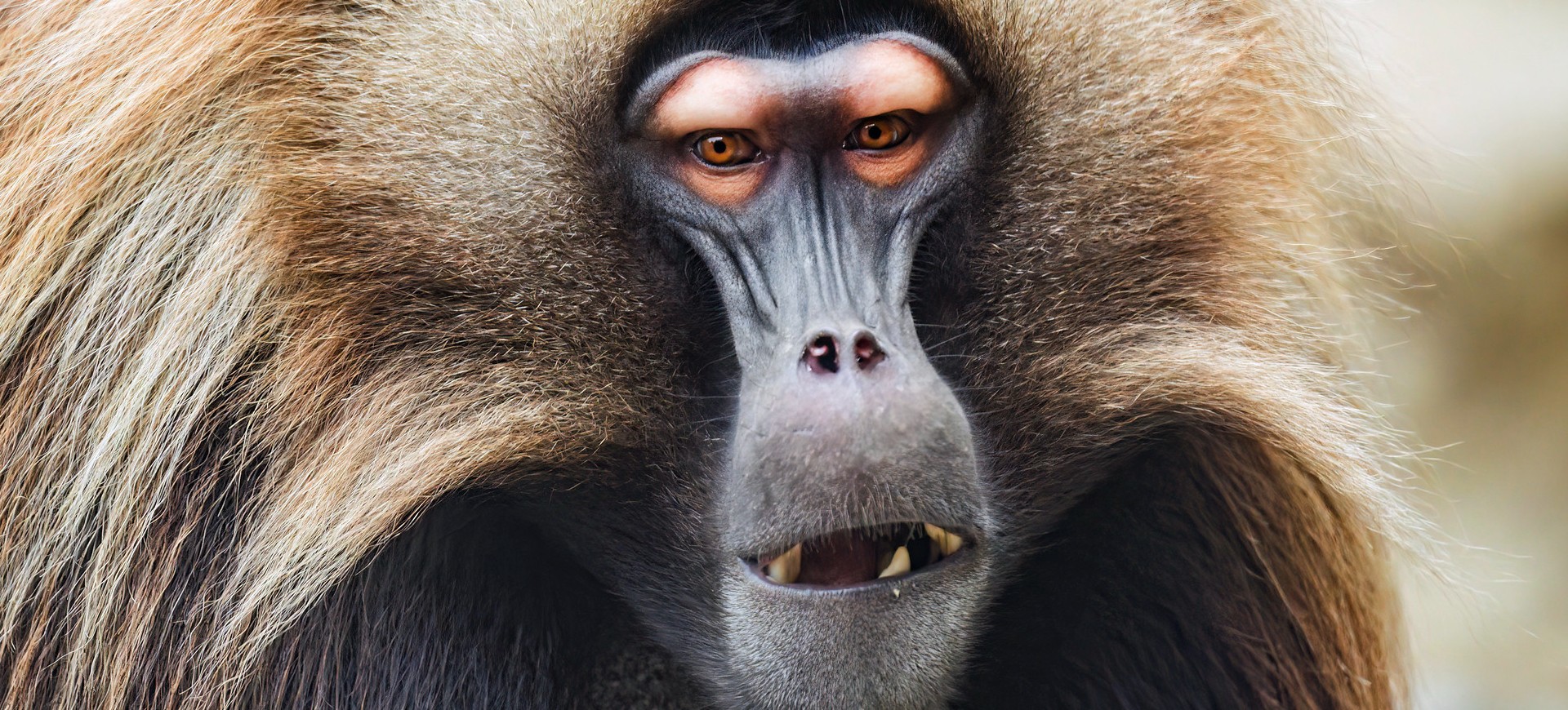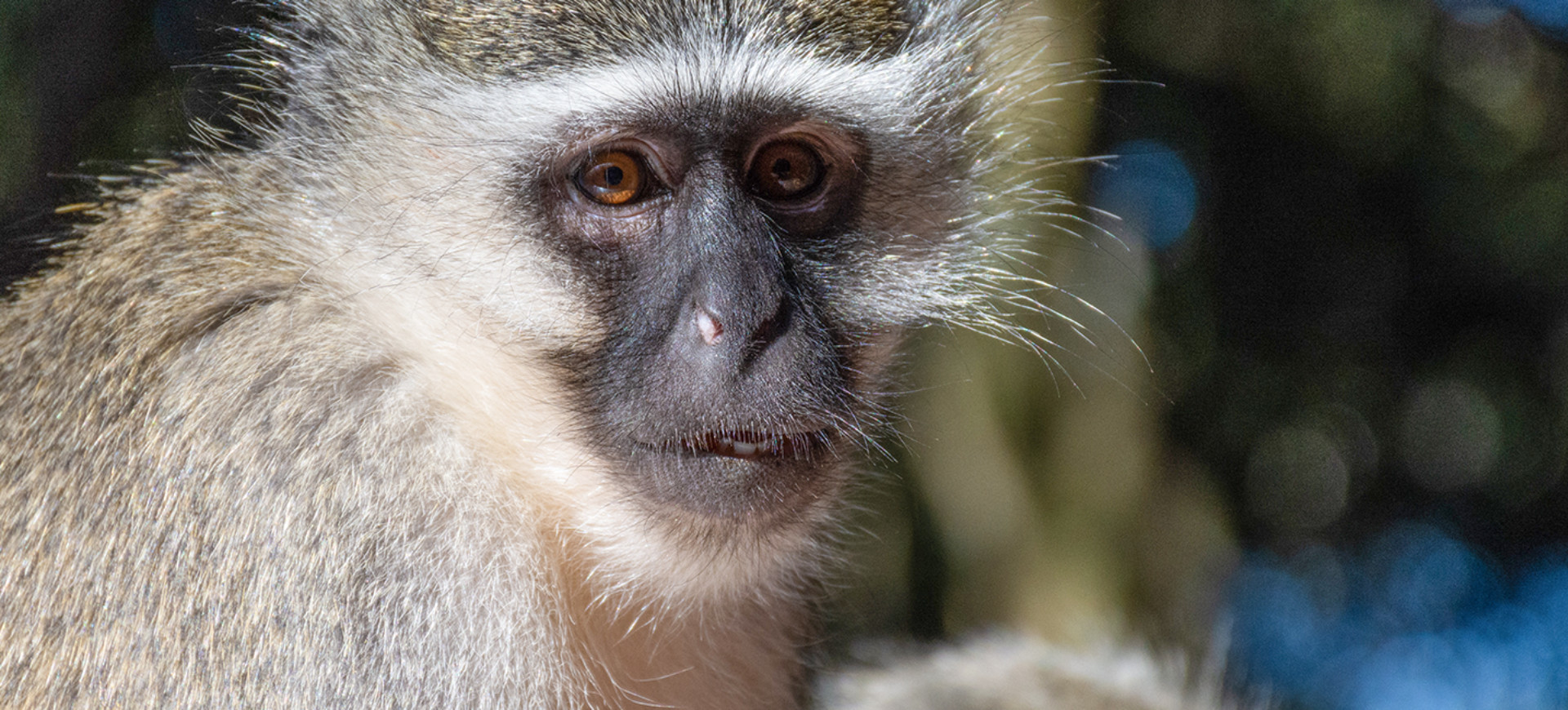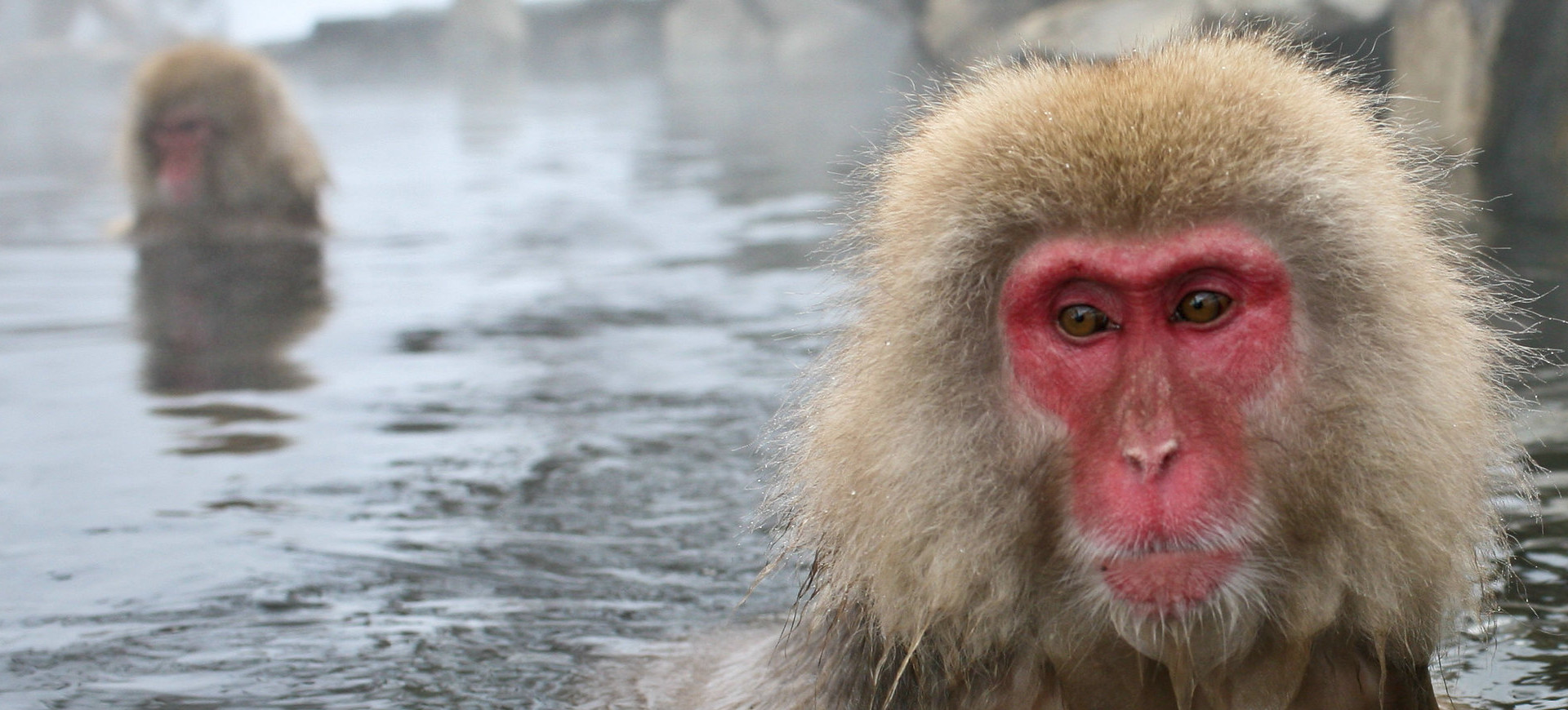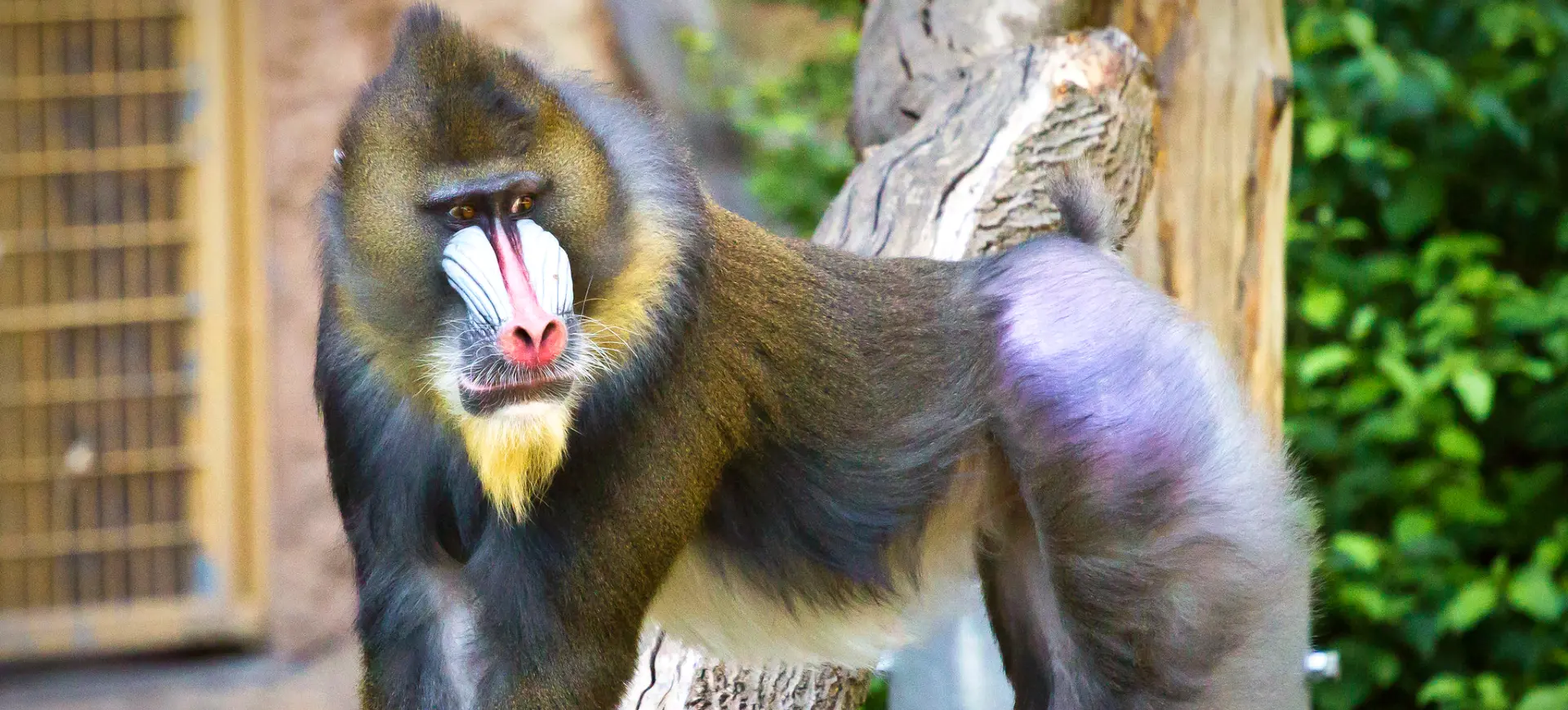Overview
The Lion-tailed Macaque, scientifically known as Macaca silenus, is a distinctive and endangered species of Old World monkey native to the Western Ghats of India. Known for their silver-white manes and lion-like tails, these primates are among the smaller macaques with a compact and robust build. They are arboreal and spend most of their life in the upper canopy of tropical rainforests, rarely descending to the ground. This species is particularly noted for its rainforest-dependent lifestyle, making it highly vulnerable to habitat loss and fragmentation.
Lion-tailed Macaques have a complex social structure, typically in troops of 10 to 20 individuals, though larger groups have been observed. These troops are composed of multiple adult males and females, along with their offspring, exhibiting a clear hierarchy. They are known for their strict territorial behavior, vigorously defending their home ranges against other groups. Communication within the group is sophisticated, involving a range of vocalizations, facial expressions, and body postures.
The species plays a vital role in its ecosystem, particularly in seed dispersal, which contributes significantly to forest regeneration. Unfortunately, Lion-tailed Macaques are facing critical challenges due to human-induced changes in their habitat. Their survival relies heavily on the conservation of the rainforest ecosystems of the Western Ghats, a biodiversity hotspot. Conservation efforts are focused on habitat protection and restoration, along with public education and research to better understand their ecological needs and behavior.
Taxonomy
Kingdom
Phylum
Class
Order
Family
Genus
Species
Type
Physical Description:
The Lion-tailed Macaque is known for its striking appearance, characterized by a mane of silver-white hair that frames the face, resembling a lion’s. They have a black, glossy coat and a distinctive tail, which ends in a tuft similar to a lion’s tail, from which their common name is derived. Adult Lion-tailed Macaques typically measure about 16 to 24 inches in body length, with a tail length of approximately 10 to 16 inches. Their facial features are expressive, with a hairless face contrasting sharply with their dark coat and mane.
These macaques display sexual dimorphism, with males generally larger and heavier than females. Adult males weigh around 15 to 29 lbs (7 to 13 kg), while females are lighter, weighing about 11 to 24 lbs (5 to 11 kg). Despite their smaller size, Lion-tailed Macaques are robust and muscular, adaptations that aid their arboreal lifestyle. Their strong limbs and tail provide excellent balance and agility, crucial for navigating the dense forest canopy.

Lifespan: Wild: ~20 years || Captivity: ~30 years

Weight: Male: 15-29 lbs (7-13 kg) || Female: 11-24 lbs (5-11 kg)

Length: Male & Female: Body: 16-24 inches (40-60 cm) || Tail: 10-16 inches (25-40 cm)
Characteristic:
Native Habitat:
The native habitat of the Lion-tailed Macaque is the tropical rainforest of the Western Ghats in India. These forests are characterized by dense canopy cover, high biodiversity, and a complex understory. Lion-tailed Macaques are arboreal, spending most of their time in the upper layers of the forest, which provides them with food, shelter, and protection from predators. Their preference for primary rainforests makes them highly sensitive to habitat disturbance and fragmentation.
These primates are adapted to live in a high-humidity, high-rainfall environment, which supports various fruit-bearing trees and plants. The complexity of the rainforest ecosystem provides numerous ecological niches, which the Lion-tailed Macaque exploits for survival. Conservation of these habitats is crucial, as they are among the most threatened ecosystems due to human activities like logging, agriculture, and urban expansion.
Climate Zones:
Biomes:
WWF Biomes:
Biogeographical Realms:
Continents:
Countries:
Diet:
Diet & Feeding Habits:
Lion-tailed Macaques have an omnivorous diet, primarily feeding on fruits, leaves, seeds, and insects. Their diet largely depends on food availability in their rainforest habitat, with fruits constituting the majority of their intake. They also consume small vertebrates, bird eggs, and invertebrates, demonstrating their opportunistic feeding behavior. These macaques play a crucial role in their ecosystem as seed dispersers, aiding in the propagation of several tree species.
Their highly adaptive feeding strategy allows them to exploit the diverse resources available in the tropical rainforest. Lion-tailed Macaques are selective feeders, often choosing ripe fruits and tender leaves, which provide essential nutrients. They forage in the canopy, using their agility and dexterity to access food sources. The social aspect of feeding is evident, with troop members often feeding nearby and sharing food, especially among kin.
Mating Behavior:
Mating Description:
The Lion-tailed Macaque’s mating system is predominantly polygynous, with dominant males mating with multiple females within the troop. The mating season is not strictly defined, but births tend to peak during certain times of the year, suggesting a seasonal pattern in mating. Courtship behaviors include grooming, vocalizations, and displays of dominance by males, which play a role in attracting females. Males compete for access to females; the dominant male usually has the highest mating success.
Females give birth to a single offspring after a gestation period of approximately six months. The mother is the primary caregiver, with infants being highly dependent on her for nourishment and protection. Young macaques are weaned at about one year of age but remain close to their mothers for several years. Social learning is crucial for young Lion-tailed Macaques, as they acquire necessary survival skills through observation and interaction within the troop.
Reproduction Season:
Birth Type:
Pregnancy Duration:
Female Name:
Male Name:
Baby Name:
Social Structure Description:
The social structure of the Lion-tailed Macaque is both complex and hierarchical. Troops typically consist of 10 to 20 individuals, including multiple adult males and females and their offspring. The dominant male plays a crucial role in the group, leading and protecting the troop, while the females form the core of the social structure. Females typically remain in their natal groups for life, forming strong bonds and cooperative relationships, especially in the care of the young.
Within the troop, social interactions are intricate and involve grooming, play, and a variety of vocal and physical communications. These interactions are crucial for maintaining social bonds and hierarchies within the group. Young macaques learn social skills and behaviors through observation and interaction with older troop members. The stability of the social structure is vital for the group’s survival, providing security and increasing the efficiency of foraging and predator avoidance.
Groups:
Conservation Status:
Population Trend:
The Lion-tailed Macaque population is estimated to be between 2,000 and 2,500 individuals in the wild, indicating a small and declining population. This decline is primarily due to habitat loss and fragmentation, which have resulted in isolated populations with limited genetic exchange. The small population size makes them vulnerable to stochastic events and increases the risk of inbreeding. Populations are mostly confined to protected areas, but even within these areas, they face challenges due to human activities and habitat encroachment.
The current population trend is decreasing, with ongoing habitat loss being the most significant threat. Conservation efforts are crucial to prevent further decline and ensure the survival of this species. Effective conservation strategies include habitat protection, restoration, and the creation of corridors to connect isolated populations.
Population Threats:
The primary threat to the Lion-tailed Macaque is habitat loss and fragmentation due to deforestation for timber, agriculture, and human settlement expansion. This habitat loss reduces their living space and isolates populations, hindering genetic exchange. Additionally, they face threats from hunting and poaching, although this is less significant than habitat loss. Human-wildlife conflict is another challenge, particularly in areas where their habitat overlaps agricultural land.
Climate change poses a long-term threat, potentially altering the ecosystem of the Western Ghats and impacting the availability of food resources. The species’ dependence on primary rainforests makes them particularly vulnerable to environmental changes. Conservation efforts must address these threats to ensure the long-term survival of the Lion-tailed Macaque.
Conservation Efforts:
Conservation efforts for the Lion-tailed Macaque are focused on habitat protection and restoration. This includes the expansion and effective management of protected areas, as well as the creation of corridors to connect fragmented habitats. Raising awareness among local communities and involving them in conservation initiatives is crucial, as human activities are a primary threat to their habitat.
Research is vital in conservation, providing insights into ecology, behavior, and population dynamics. Efforts are also being made to mitigate human-wildlife conflict, particularly in regions where agricultural activities intersect with macaque habitats. Education programs aimed at local communities help foster a better understanding of the species and the importance of coexistence. Rehabilitation and release programs for displaced or captive individuals are also part of the conservation strategy, though these require careful management to ensure success.
Additional Resources:
Fun Facts
- The Lion-tailed Macaque’s mane and tail make it one of the most recognizable species.
- They are excellent climbers and spend most of their lives in the trees, rarely coming down to the ground.
- This species is known for its loud vocalizations, which can be heard long distances in the dense forest.
- Lion-tailed Macaques have cheek pouches, which they store food while foraging.
- Their diet plays a crucial role in seed dispersal, aiding in the regeneration of their rainforest habitat.
- They have a unique way of drinking water by dipping their hands in water and then licking the droplets off.
- Lion-tailed Macaques are considered a flagship species for conserving the Western Ghats.
- Infants bond closely with their mothers and ride on their bellies for the first few months of life.
- They are skilled at using their hands and can dexterously manipulate objects.
- Despite their small population, Lion-tailed Macaques show remarkable resilience and adaptability to their ever-changing environment.





